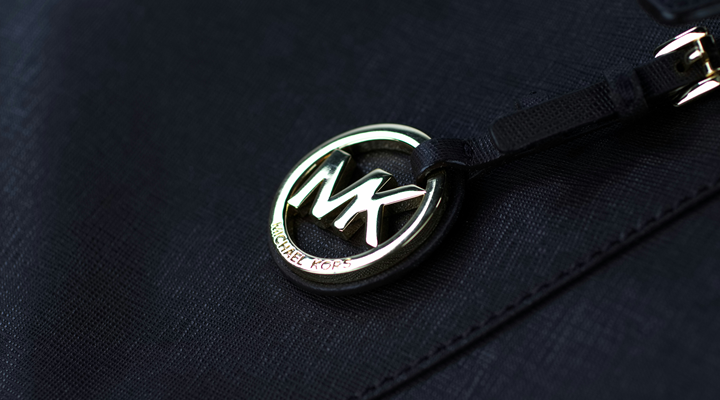Our Terms & Conditions | Our Privacy Policy
With Versace gone, can Michael Kors and Jimmy Choo carry Capri forward?
Luxury group Capri Holdings continues to struggle amid the luxury market’s broader slowdown with sales dropping 6 per cent year on year to $797 million. While Capri posted a modest net income of $56 million, it is difficult to view these numbers as anything but a sign of structural weakness, particularly when considered against the performance of competitors like Tapestry and Ralph Lauren, both of which have managed to ride out luxury’s slowdown with far more resilience. “Even though
though there has been a slowdown in the luxury market, Capri’s results are way worse than this decline,” Neil Saunders, MD of GlobalData, said. “This is especially so as the accessible part of the market in which Capri operates has seen modest growth over the past quarter.”
According to the retail expert, compared to the same period in 2019, sales of Michael Kors and Jimmy Choo have dropped almost by half.
The crisis of mass-market luxury
Of the two remaining brands, Michael Kors is by far the largest and the most troubled. For the first quarter ended June 28, revenue fell 5.9 per cent to $635 million, following a 14.2 per cent drop the previous year.
While some of this is due to strategic actions like trimming wholesale distribution and shuttering underperforming stores, Saunders noted that these corrections do not account for the bulk of the deterioration.
“Rather, this comes from the erosion of customers who are not inspired and are increasingly overlooking Michael Kors. The problem here is one of brand position and image and, unfortunately, engineering a solution is not easy,” he said.
Capri Holdings’ CEO, John Idol, said in the earnings call that the company has been revamping marketing campaigns and social media presence while expanding its network of influencer partnerships to power sales.
“In our view, this is not landing all that well, and the quality of campaigns still falls well short of rivals. There is a significant amount of work to do here, and it will take many quarters of effort to even start rebuilding the brand,” Saunders said.
Indeed, the brand has struggled to keep pace with competitors like Coach, which has successfully repositioned itself and gained popularity among Gen Z customers, especially through its chain of coffee shops.
Michael Kors, by contrast, remains stuck in the middle. While not being premium enough for luxury, the brand failed to offer competitive prices for aspirational shoppers.
“In our view, Michael Kors still behaves like a commodity brand masquerading as a luxury label. It doesn’t have the cachet or prestige of a brand like Coach, and it is far less disciplined in market execution,” Saunders said.
“This means consumers are very reluctant to pay a premium for Michael Kors products and that some, as they become more discerning on what they buy, are happy to overlook it.”
Jimmy Choo: Holding ground
Meanwhile, its sister brand Jimmy Choo presented a slightly more stable picture. Turnover for the quarter dipped 6.4 per cent to $162 million, with operating income flat at $4 million.
“However, since 2019, revenue is up by 2.5 per cent,” the expert said. “This is an underperformance relative to the market, but it reflects the fact Jimmy Choo still has brand equity and stimulates consumer interest.”
“Admittedly, the footwear market has been challenging for all players as more consumers have deprioritised shoes in favor of accessories and garments. Jimmy Choo has partly offset this by leaning more into accessories, but more work is needed to round out the offer and make it more of a destination for those products.”
A reset without Versace
The sale of Versace to Prada is expected to bring much-needed financial cushion to the group, particularly to pay down its $1.7 billion in debt and restore balance sheet flexibility.
“However, this does not negate the responsibility of management to lay out a clear vision for its brands and to execute consistently and with speed. Failure to do so, will put the group on a glidepath to irrelevance,” Saunders said.
Versace was, if nothing else, a brand with cultural heat and the potential to play in the upper echelons of fashion. Its removal from the portfolio leaves Capri with two brands that are mid-market in perception and slowly losing ground.
“This puts Capri at odds with other groups like Tapestry and Ralph Lauren. And this exposes the fact that many of the problems are internal rather than being driven by market dynamics,” Saunders said.
“Looking ahead, the current fiscal will be one of decline. There is unlikely to be any revenue growth before 2027.”
Further reading: How Capri Holdings uses a 75,000-strong consumer ‘lab’ to shape luxury retail
Images are for reference only.Images and contents gathered automatic from google or 3rd party sources.All rights on the images and contents are with their legal original owners.



Comments are closed.